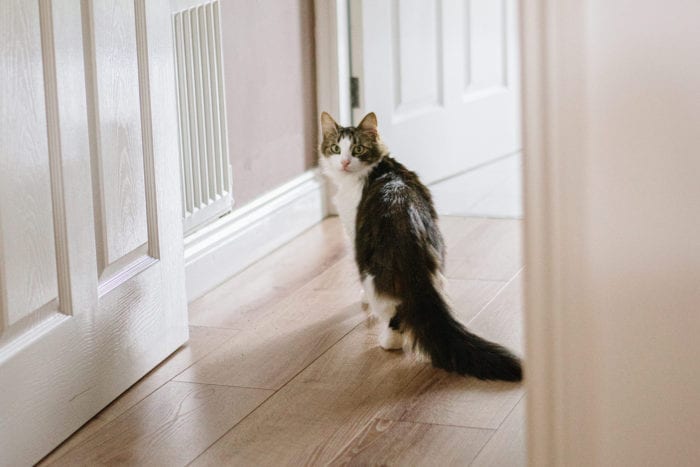Indoor Air Quality Services and Health Guide
At Homesense Heating and Cooling, we understand the importance of establishing good indoor air quality (IAQ) for your family on a day-to-day basis. That’s why we believe in a 360-degree approach that combines your family’s needs, our expertise, and your equipment options.
We see the value behind educating you on the factors that make for healthy, clean air, what danger factors to look out for, and what to do to regularly establish an environment that you and your loved ones can feel good about at home.
This guide will provide you with the explanations, causes, health effects, recommendations, testing, and cost associated with proper indoor air quality and your next steps.
Quicklinks:
- What are the basics of indoor air quality?
- What factors affect the IAQ in our home?
- How can I identify any air quality problems?
- What are the health effects of poor indoor air quality?
- Who is at a higher risk for IAQ health problems?
- Are there any additional issues related to poor indoor air quality?
- How do I improve the air quality in my house?
- How do I know if I need an air purifier?
- When is it necessary to use dehumidifiers?
- When is a humidifier needed in my home?
- What are the benefits of a humidifier?
Understanding the Basics of Indoor Air Quality
According to the EPA, Indoor Air Quality (IAQ) refers “to the air quality within and around buildings and structures, especially as it relates to the health and comfort of building occupants.” By understanding and controlling common pollutants indoors, you can reduce your risk of the affects of indoor pollutants now and in the future.
It’s inevitable that all humans regularly face risks to our health as we go about our day-to-day lives. Whether we’re driving in cars, flying in planes, running errands, or watching TV at home, the chances of being exposed to air pollutants is expected.
Many of those risks we accept because to do otherwise would restrict our natural need and desire to live normally. Others are risks we might choose to avoid if we knew more and had the ability to select another option.
Recently, scientific evidence has indicated that the air inside our homes can be more polluted than the outdoor air. Knowing about how much time we choose to spend indoors (some research indicating that people spend 90 percent of their regular time indoors) the risks to health may be higher.
Factors Affecting Indoor Air Quality Issues
There are a number of factors that can affect IAQ and the outcomes associated with its levels:
- Ventilation
- Pets
- Temperature
- Humidity
- Pests
- Air particles
- Radon
- Chemicals
Indoor Factors
Many personal habits like smoking or poor personal hygiene can be cause for unpleasant smells and additional dust in the air. When it comes to basic housekeeping, many also forget that deodorizers or cleaning materials can actually contaminate the air when used in excess. Additional factors, such as pest control, liquid spills, excess humidity, office supplies (like toner), and room occupant load, can also affect the overall quality.
With these indoor factors, if minimal outdoor air enters a home, pollutants can build up that may cause discomfort and risks to health. Homes are often designed to minimize the amount of outdoor air, which makes sense when it comes to houses located in cooler climates, but it’s important that homeowners not let indoor factors overtake the quality of the air.
Outdoor Factors
You have the more commonly known factors including vehicle exhaust, pollen, and industrial pollutants. Depending on where you’re located you might also experience nearby source emissions like dumpsters, loading docks, or building exhaust. Some soil gas can also become an issue like radon, pesticides and underground storage tanks. Finally, you have the standing water factors that contribute to mold and mildew.
With an HVAC system, homeowners and businesses need to be well aware of the additional factors that circulate in the air when left unchecked. HVAC systems have been known to collect dust in the ductwork and in air filters that go unchanged which can then cause microbial growth which is circulated through ventilation air.
How Do I Identify Indoor Air Quality Problems?
According to the US Consumer Product Safety Commission, there are several signs to look out for when trying to pinpoint indoor air quality problems.
Health
Poor health conditions are often indicators of an indoor air quality problem, especially when they pop up after you move to a new house, remodel parts of a home or room, or treat indoor environments with pesticides. Immediate symptoms include headache, nausea, sinus issues, and skin irritation.
Everyday Life
Another way to decide if your home may have poor indoor air quality is to take a deep look at how you live your life on a day-to-day basis. Many unrecognized activities you may enjoy can be significant sources of indoor air pollution.
- Do you smoke or vape indoors?
- Is dusting a regular part of your cleaning?
- Do you shower on a regular basis?
- Are you a pet owner?
- Do you frequently spray air fresheners or burn candles?
These are all personal choices we make on a daily basis that can contribute to an air quality problem when not managed at an appropriate level.
Environmental
Another way to see if your home has indoor air problems is to identify potential factors of pollution (mentioned above). Having potential pollution threats in your home might not mean you have an outright problem just yet, but being made aware of the sources is an important step toward understanding the quality you may have.
Finally, look for signs of bad ventilation in your house. Signs of poor ventilation include foul odors, condensation on windows or walls, central air units covered in dirt or dust, and areas where household items become moldy.
Health Effects of Poor Indoor Air Quality
The health effects of IAQ problems can present themselves in a number of different ways.
Common Symptoms
Below are some immediate homeowner symptoms often attributed to IAQ problems:
- Nausea
- Skin Irritation
- Dizziness
- Sneezing
- Cough
- Sinus Congestion
- Fatigue
- Shortness of Breath
- Headache
- Eye, Nose, and Throat Irritation
As a note, these symptoms do not necessarily mean poor air quality is circulating around you, but they can be initial signs of a problem. Treatment in these cases is simple as it usually just means eliminating the exposure to the pollutant once it’s been identified.
With these more immediate reactions, the symptoms can resemble a common cold, which makes it that much more difficult to address. Homeowners should pay close attention to whether or not these symptoms go away when they leave the house or a certain room as it could be an indication of poor air quality (almost like when you come inside from heavy pollen exposure – you notice a runny nose or itchy eyes).
Symptoms, however, can vary from person to person depending on age, pre existing medical conditions, and desensitization from repeated exposure over time.
Critical Symptoms
Other health problems may show up months or years down the road after longer exposure to pollutants that may not be as obvious. These include issues with breathing, heart disease, and even cancer.
According to the EPA, the following more common indoor air pollutants have been well researched and have well-known side effects.
- Commonly referred to as asthma triggers, dust mites, pet dander, mold, tobacco smoke, and air particles can cause attacks in some individuals.
- Carbon Monoxide is highly toxic and even short-term exposure can cause disorientation and death.
- Radon is a human carcinogen and the second leading cause of lung cancer.
- Buildings with poorly maintained HVAC systems have caused episodes of legionnaires’ disease, or pneumonia because of the bacteria circulating through the system.
Keep Your Indoor Air Clean by Servicing Your HVAC System
Who is at a Higher Risk for IAQ Health Problems?
Nearly everybody is at risk for developing health issues related to poor indoor air quality, especially considering the earlier statistic that many people spend 90 percent of their time indoors.
That being said, children are more susceptible to developing adverse reactions due to the fact that they spend a great deal of time in school buildings and have young immune systems. Their bodies are still developing and have more trouble than adults processing toxins.
They are also at a higher risk due to the fact that they often don’t know of the dangers found around the house and on the ground. For this reason alone, adults need to take the extra care to consider indoor air quality where their children spend large amounts of time.
Additional Issues Related to Poor Indoor Air Quality
In addition to the health risks associated with air pollutants, poor indoor air quality also has other adverse effects that homeowners should consider.
- Discomfort: First, there are the uncomfortable temperatures. When clean air isn’t being circulated within the home, it can cause a great deal of discomfort — specifically in the summer with higher chances for humidity.
- Mold: When there are high moisture levels (especially with humidity), mold growth can take place. This can cause health concerns, but it can also attract pests, damage furniture, and cause a foul order in the home.
- HVAC Functionality Issues: Vast amounts of air pollutants indoors can quickly dirty your air vent and prevent steady air flow. This can then cause dust and pest buildup in your ductwork, harming the inner parts of your HVAC system and causing breakdowns.
- High Utility Bills: If there are clogged air filters or blocked ductwork due to pollutants, the HVAC system will need to work that much harder to maintain a steady temperature — resulting in higher utility bills.
How Do I Improve Indoor Air Quality?
Improving indoor air quality can be both simple and straightforward. However, in some cases where the problem has been left unaddressed, the cleanup could become strenuous. Listed below are some of the best ways to improve your home’s IAQ.
Ventilation Improvements
Homeowners should consider better ventilation techniques to increase and improve the amount of outdoor air coming into the house. Most heating and cooling systems are not designed to bring fresh air into the house. This can be done by simply opening windows and doors when the weather is appropriate, running ceiling or attic fans, and running kitchen and bathroom fans to remove contaminants directly from the room.
Regular Household Cleaning
Cleaning efforts should be focused on reducing accumulation of pet dander, mold, and dust that often lurks. This can be achieved by simply vacuuming, cleaning bedding and other linens, using dust mite proof covers on bedding and pillows, and clearing away unnecessary amounts of clutter where dust and mold can grow.
Invest in an Air Purifier
If you’re allergic to indoor allergens it may help to use an air purifier. These air cleaners can help capture some of the irritants that may trigger your symptoms. You’re probably not going to be able to remove these allergens completely, but you can cut down on them, which may help the problem. Homesense recommends the following air purifiers as options to provide a clean and safe indoor air system.
Honeywell Media Filter Cabinet – Air Cleaner – Model F100
Benefits include:
- MERV 9 filter
- Long lasting filter – typical use is 6 to 12 months
- Up to 4 times for effective and 85% more efficient at capturing airborne particles than standard 1 inch filters
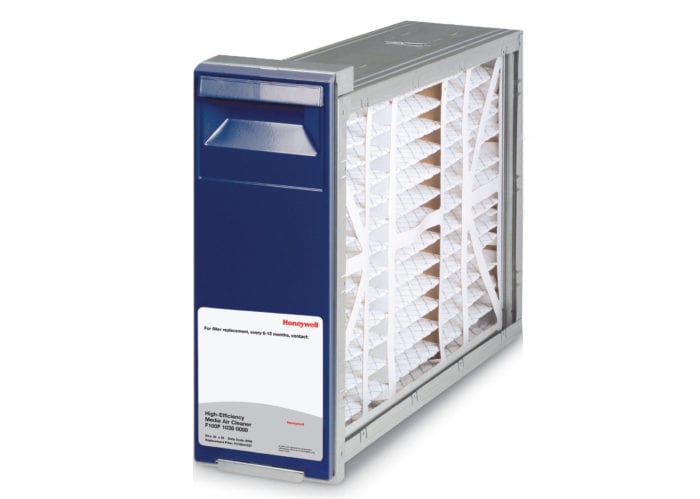
REME HALO Whole Home In-Duct Air Purifier
Benefits include:
- Dual ionizers to reduce airborne particulates (dust, dander, pollen, mold spores)
- Kills up to 99% of bacteria, mold and viruses
- Reduces sneeze germs by 99% in the time a sneeze can reach three feet.
- New zinc ions kill 99% of viruses on surfaces
- Unlike portable units that are limited to the room in which they are placed, the Reme Halo provides whole home and building purification.
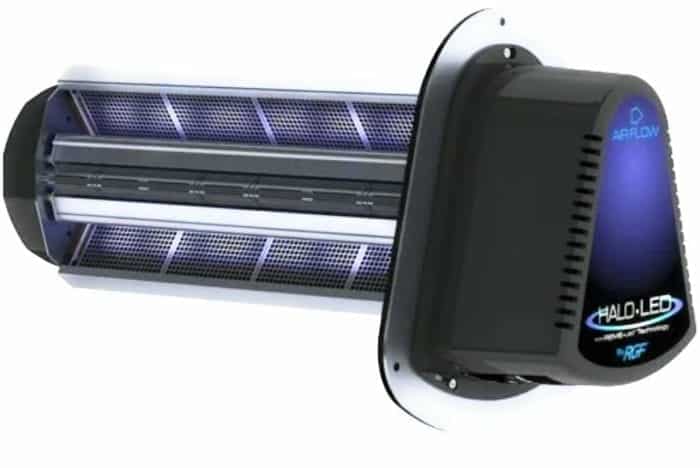
iWave-R Air Purifier
Benefits include:
- Patented self-cleaning design ensures ongoing peak performance
- Needlepoint bi-polar ionization actively treats air in the living space
- Universal mounting with magnets
- Flexible design with no replacement parts
- Kills mold, bacteria, and viruses
- Reduces allergens, odors, smoke, static electricity, and other airborne particles
- Keeps coil cleaner
- Programmable cleaning cycle
- For duct systems up to 6 tons (2400 CFM)
- Universal voltage input – 24VAC to 240VAC!
- Alarm contact option for secondary notification
- UL and cUL approved
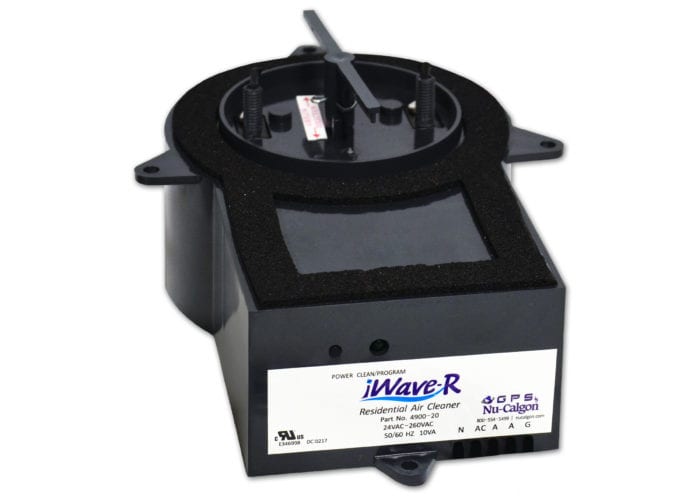
Invest in a Dehumidifier for Indoor Air Quality
It might be wise to consider a dehumidifier in damp areas, such as a basement, to help prevent the growth of mold. Ensure that bathrooms, another potential source of mold, are well ventilated as well and scrub off any visible mold that collects in the shower, on fixtures, or walls. Homesense recommends the following dehumidifiers to reduce water buildup.
Aprilaire Model 1850F and Model 1850 Dehumidifier
Benefits include:
- Up to 95 pints of moisture removal daily
- Free standing/non-ducted and ducted versions available
- Ducted version serves up to 5,200 square feet
- 5-year warranty
- Made in USA
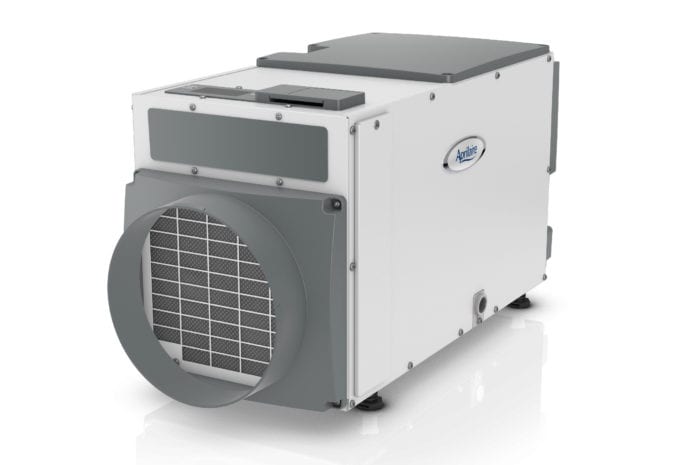
Aprilaire Model 1830 Dehumidifier
Benefits include:
- Up to 70 pints of moisture removal daily
- Designed for smaller homes, townhomes, condos, and crawl spaces
- Up to 3800 square feet
- 5-year warranty
- Made in USA
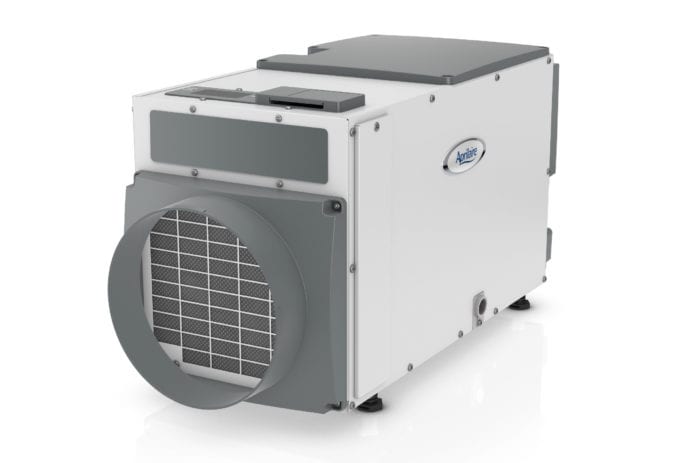
Aprilaire Model 1770A Dehumidifier
Benefits include:
- Up to 135 pints (nearly 17 gallons) of moisture removal daily
- Provides dehumidification up to 7,400 square ft.
- Ducted into HVAC system
- 5-year warranty
- Made in USA
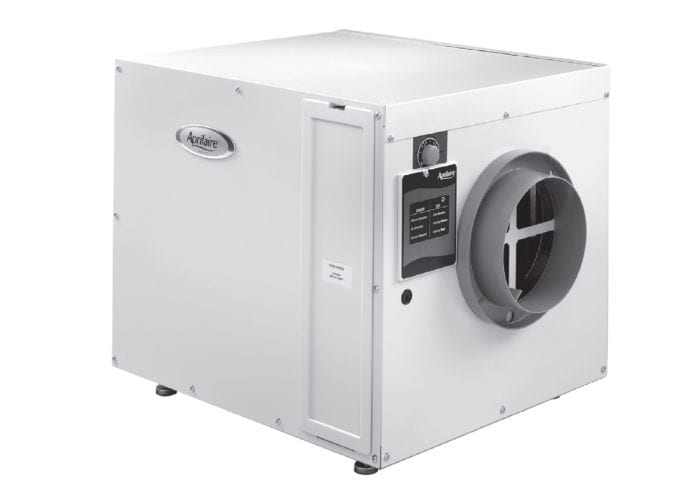
Reduce Tobacco Smoke Indoors
If there are habitual smokers in the home, it would be wise to encourage them to quit the habit, or at the very least step outdoors so it doesn’t pollute the air indoors.
Measure and Report Radon
Homeowners have the ability to easily order and install radon test kits throughout their home if they suspect there may be an issue. The EPA recommends kits that have passed their testing standard. If the kits measure high levels for radon, the EPA recommends contacting your state radon office and connecting with a contractor trained in radon removal.
Address Water Damage
If carpets have been cleaned or a more serious flooding issue has occurred, the space should be well ventilated to dry out. If the flooding is severe, materials like carpet and wood flooring should be removed and cleaned to reduce mold buildup.
Install Smoke and Carbon Monoxide Detectors
All homes are now required to have these in place, but make sure to check that your detectors have batteries and are working properly. This will alert you to any leaks you may be unaware of in your home.
Carefully Monitor Fuel-Burning Space Heaters
Homeowners should be aware that these types of heaters will sometimes increase pollutant emissions. Owners should read the manual carefully for proper use and open a door to allow emissions to spread evenly throughout the home.
Monitor Wood Stove Emissions
If you have a wood-burning stove, make sure that the doors are tight-fitting to keep burnoff directly in the fireplace. Be sure to follow the manufacturer’s directions by only using aged or cured wood and not burning treated wood that often has chemicals.
Install Fans in the Kitchen for Better Indoor Air Quality
Using a stove hood with a fan that vents outdoors will help reduce poor indoor air quality when cooking, especially if there’s a great deal of smoke.
Have Your Fireplaces and Chimneys Inspected
It’s smart to have your fireplaces and chimneys inspected by a professional once a year, if possible. They will make sure you don’t have particle buildup and that cracks or damages are assessed so you can address them quickly.
Change Your Furnace Filter
We at Homesense strongly recommend changing out your filter at least 4 times a year with the changing seasons. Air is always circulating through the system, so it’s important to keep it clean and fresh. Watch the following video from one of our owners on how to properly change the filter.
Clean Your Ducts and Air Vents
If there happens to be a good amount of buildup in the air vents and ducts, you can have Homesense come out to inspect and remove buildup. The same also applies to dryer vents. Manufacturers recommend annual cleanings to remove lint and dust buildup, improve air quality, and reduce house fires.
At Homesense, we use the following process for duct cleaning:
- The Homesense air duct cleaning service begins with an inspection of all of the air ducts in your home.
- After the inspection, we hook up our high-powered blower and HEPA filtered vacuum to your duct system.
- We then use our air duct cleaning tools to agitate and dislodge any dirt in your air ducts. All of the dirt and dust we dislodge will be sucked out through our vacuum hose and out of your home.
- Finally, we clean all of your air vents and returns.
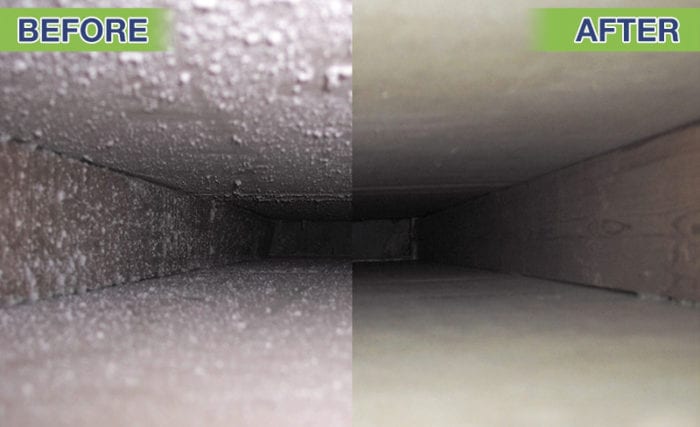
Get an HVAC Inspection to Improve Indoor Air Quality
Be sure you have your furnace inspected on a regular basis, especially if you see warning signs of the heat or air conditioning not working properly. Common indicators include a system that is constantly running, strange smells from the vents, and higher energy bills. If your furnace stops working altogether, a Homesense technician can help to conduct a 19-point inspection of the system.
Do I Need an Air Purifier?
Air purifiers might sometimes seem unnecessary, especially when thinking through whether or not it’s worth the investment. However, if you encounter any of the following on a regular basis, an air purifier might be exactly what you need.
Living With a Smoker
Secondhand smoke is considered to be incredibly dangerous to your body and can have negative long-term side effects. Air purifiers that have HEPA filters are designed to rid spaces of this secondhand smoke along with tobacco pollutants.
Recently Moving
New house smells may seem fresh and clean, but sometimes the air can be filled with toxins like formaldehyde — which can also cause health problems. An air purifier will help to clear the air and make your home move-in ready.
Living With Pets
Many pet owners aren’t necessarily willing to get rid of their animal because of pet dander and fur. If you aren’t wanting to get rid of fluffy just yet but can’t stand the dander and hair you see, an air purifier might be the next best thing.
Lingering Strong Odors in House
An air purifier can be a great catch-all for general smells that roam your home from neighbors, pets, or teenagers with smelly clothes.
Friends and Family With Respiratory Issues
If you have a family or friend with respiratory issues like asthma that are easily triggered by dust and allergens, you want to do everything in your power to clear the air. An air purifier can help eliminate triggers and keep everyone breathing easily.
When is it Necessary to Use Dehumidifiers?
As excellent as many of our heating and cooling systems are, they can’t always provide full protection from the inevitable sticky weather that occurs in the midwest. With some older homes especially, the need to improve air flow and reduce moisture becomes much more significant.
Factors our customers often consider when choosing a dehumidifier include:
- Condensation on windows and doors
- Growth of indoor insects
- Warped wood floors and furniture
- Uncomfortable sweating and sticky feelings
- Musty basement smells
Watch the below video from Aprilaire on why it might be time to consider adding a dehumidifier to your home.
When is it Necessary to Use Humidifiers?
Just as you might use a dehumidifier in the sticky summer months to address moisture, you might also consider a humidifier in the dry winter months. Many are familiar with portable humidifiers for the sake of reducing cold-like symptoms when going to sleep, but many have not yet heard about whole-home humidifiers.
Our experts professionally install these to distribute the much needed moisture throughout your ductwork. This is a very safe and sanitary option because it plumbs directly into your home’s water source.
Factors our clients often consider when choosing a humidifier include:
- Dry skin, lips, noses, and throats
- Static electricity
- Cracked floorboards or warped furniture
- Additional warmth from the moisture
Review some of the best whole-home humidifiers that Homesense recommends to improve your indoor air quality when it’s dry.
What are the Indoor Air Quality Benefits of a Humidifier?
We think there are several positives to investing in a humidifier for your house.
Help Your Health
Prevent respiratory problems, decrease your likelihood of catching the flu or a cold, and reduce your chances of getting an infection.
Increase Personal Comfort
Eliminate symptoms, such as dry skin and noses, scratchy throats, asthma, allergies, and shocks you sometimes get from static electricity.
Preserve Your Home
A humidifier can save your dry hardwood floors from cracking, walls from warping, paint from chipping and electronics from getting damaged from too much moisture in the air.
Save Energy and Money
According to the Department of Energy, you save up to 4 percent on your heating bill for every degree you lower your thermostat. A home with higher humidity levels will make you feel warmer, allowing you to keep your thermostat at lower temperatures.
Not sure which humidifier to choose? We carry and supply humidifiers by Aprilaire and can provide any of the following from their site. We recommend the whole house humidifiers below to improve your indoor air quality when it’s dry.
Aprilaire Model 400 Humidifier
Benefits include:
- Conserves water using a unique evaporation process that also eliminates the need for a floor drain
- Full coverage up to 4,000 square feet in tightly built homes with a capacity of 17 gallons per day
- Automatic humidifier with dual sensors to monitor and respond to both outdoor temperature and indoor relative humidity to deliver optimum humidity 24/7 throughout the home – simply set it and forget it
- Convenient digital controls
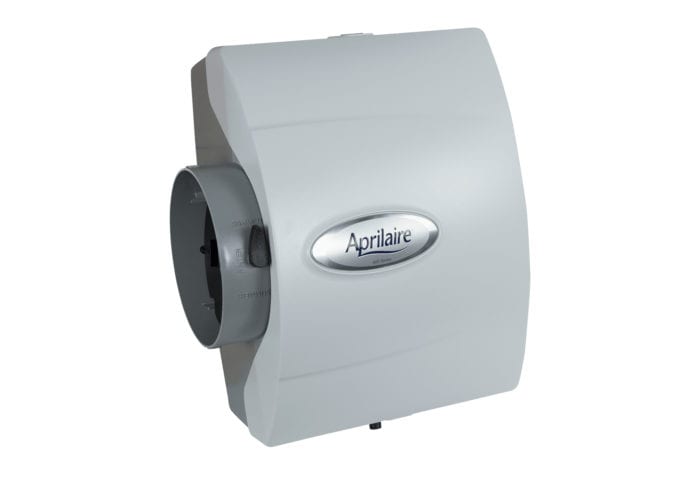
Aprilaire Model 700 Humidifier
Benefits include:
- Built-in fan pulls heated air directly from the furnace through the humidifier
- Full coverage up to 4,200 square feet in tightly built homes with a capacity of 18 gallons per day
- Automatic humidifier with dual sensors to monitor and respond to both outdoor temperature and indoor relative humidity to deliver optimum humidity 24/7 throughout the home – simply set it and forget it
- Convenient digital controls
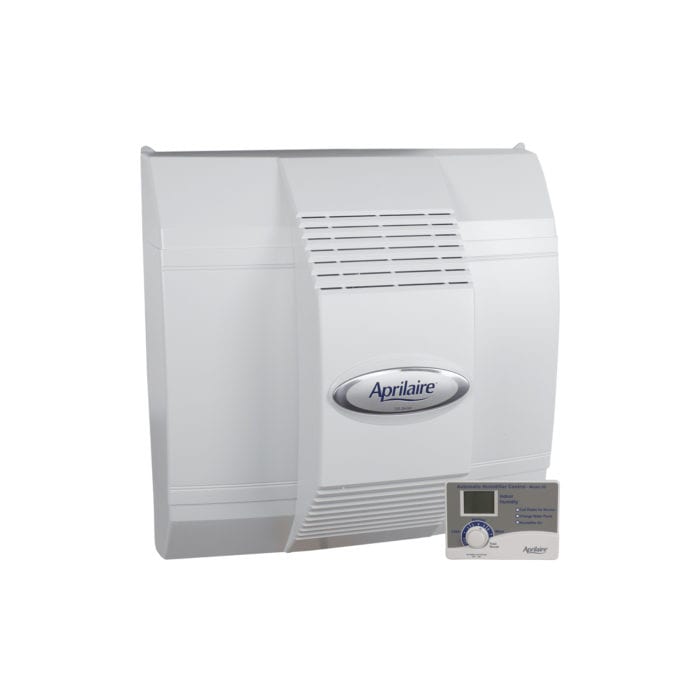
Aprilaire 865 Humidifier
Benefits include:
- Wall mount fan pushes humidified air into living space for homes without an HVAC duct system
- Full coverage up to 6,200 square feet in tightly built homes. Choose from 6 levels of output adding 11.5 to 34.6 gallons of moisture into the air per day based on voltage and installation.
- Ideal for homes in arid, desert climates.
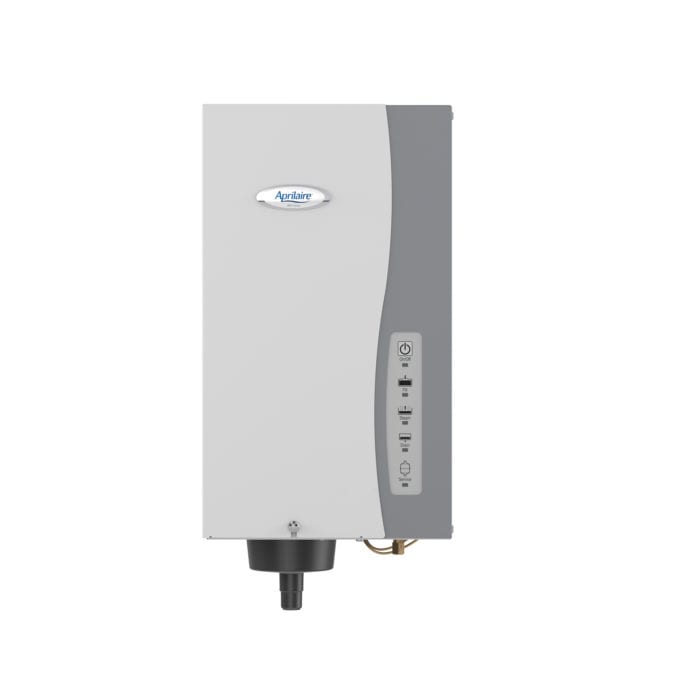
. . .
Attaining good indoor air quality is easier than it may sound. While many of the suggestions above provide long lists of suggestions for your next steps, majority of the time it only requires preventative care.
Here at Homesense Heating and Cooling, our experts can help you attain the indoor air quality you desire at the right quality and price you need. Looking for more information on air purifiers, de/humidifiers, or HVAC systems? Be sure to email us or give us a call today!

